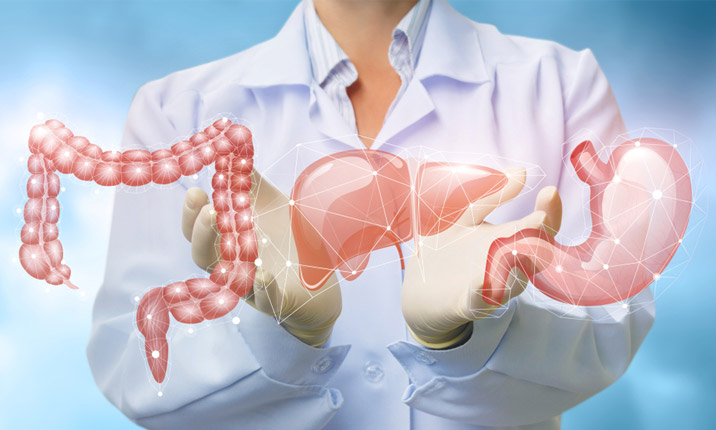GI CANCER

GI Cancer
Common GI cancers in brief:
Colorectal Cancer
CRC is one of the most common causes of cancer-related death in both men and women around the world. It occurs when a malignant tumour forms in the lining of the large intestine (colon) or at its end (rectum).
The symptoms depend on a number of factors such as the location, type, and stage of the cancer. The most common symptom that has been observed in patients diagnosed with colorectal cancer is a change in bowel habits. Patients may notice blood in stool, occult bleeding, weight loss, and fatigue. However, symptoms may not appear for a long time as colorectal cancer grows slowly. That is why cancer screening is essential for detecting it at an early stage.
Gastric (stomach) Cancer
It is a disease in which malignant (cancer) cells grow in the stomach lining. Its symptoms include weight loss, dysphagia, dyspepsia, vomiting, early satiety and/or iron deficiency anaemia. This type of GI cancer is more prevalent in males compared to females. Smoking and a diet high in processed or salty foods are also risk factors.
Liver Cancer
It is the third most common form of GI cancer. It has two major subtypes – HCC and intrahepatic bile duct cancer. The chance of developing HCC is more compared to the other subtype, as evident from the global increase in its cases. Patients may experience uncommon symptoms such as pain, fatigue, weight loss and obstructive syndromes, like ascites and jaundice.
Esophageal Cancer
This type of cancer is also more prevalent in men and develops on the inner wall of the esophagus. There are two main subtypes—adenocarcinoma (which begins in glandular cells) and squamous cell carcinoma or SCC (which begins in squamous cells). While adenocarcinoma has a higher mortality rate, SCC accounts for almost 90% of the cases of esophageal cancer. Excessive alcohol consumption and cigarette smoking are associated as high-risk factors for both types. Symptoms include difficulty or painful swallowing, nausea, vomiting, loss of appetite, chest pain and hoarseness. It is advised to consult a doctor as soon as you experience difficulty swallowing.
Departments
Contact Us
- MEDICITY GUWAHATI ADITYA
- SRISHTI HOSPITAL DIBRUGARH
- +91 9560630205
- bikram.deka@gmail.com
+91 9560630205

Get In Touch
- +91 95606 30205
- bikram.deka@gmail.com
- BLK Super Specialty Hospital, Delhi
- Medicity Guwahati Aditya Hospital
- Srishti Hospital, Dibrugarh
